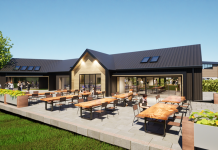UK Life Science investment funding reached nearly $5 billion in H1 2022, according to data from national property consultancy Carter Jonas, in its new Life Sciences Research Report – an update on the outlook for the life sciences sector across the UK and in the key markets of Oxford and Cambridge. In 2021, funding exceeded the total invested over the previous decade, with $17.3 billion spent on life sciences.
In the four quarters to the end of Q2 2022, the golden triangle of Oxford, Cambridge and London accounted for 81% of total funding, with a combined $6.4 billion. There were 13 funding deals above $100 million recorded in London, three in Cambridge and two in Oxford.
Investment volumes have been impacted by the pandemic, which further strengthened the UK’s reputation as a leading global life sciences hub and attractive location for funding. This focus further established the sector’s relative resilience as an asset class.
The sector has also witnessed strong employment growth. Life sciences employment increased by 3.6% on average in the 10 years since 2011, whilst UK total employment recorded growth of 1% per annum on average, in the same period. The pandemic accelerated demand for talent in the sector, with life sciences employment recording growth year on year up 13.4% and 8.5% in 2020 and 2021, respectively.
Life sciences impact on Oxford commercial property market
Life sciences firms with headquarters in Oxford received just under $1.3 billion in funding in 2021 and more than $315 million in the first half of 2022. This activity is reflected in the city’s office and lab take-up which has been supported predominantly by occupiers from the sector. Over the four quarters to Q2 2022, over 40% of total take-up was from life science companies, from early-stage start-ups to large and mature firms. Notable transactions include Exscientia, which expanded its footprint with an additional 37,000 sq ft at The Oxford Science Park and the molecular diagnostics company Exact Sciences which leased 17,816 sq ft at Arc Oxford.
Robust demand amid limited availability means that prime life science park rents have now outpaced those in the city centre. Grade A city centre space is commanding rents approaching £55 psf – whilst fully fitted lab space in some locations is exceeding £100 psf.
Office/lab investment volumes hit the highest mark on record in 2021, totalling £330 million. This record might be broken again in 2022 with more than £315 million spent by September. Prime yields are now circa 3% as competition for well-let office/lab assets has intensified.
Life sciences impact on Cambridge commercial property market
Life sciences companies with headquarters in Cambridge received just over $1.3 billion in funding in 2021 and more than $300 million in the first half of 2022. Healthy demand from tech and life science firms continues to support office leasing activity in Cambridge. Over the four quarters to Q2 2022, just over 85% of the office/lab space leased was by technology and life sciences companies, from early-stage start-ups to large and mature firms. Many of the technology companies in the market develop products to support the life sciences sector.
Office/lab prime rents have continued to grow over the past decade, sitting at £48.50 psf in Q2 2022. This increase reflects the strength of demand for business/science park accommodation. Rents are expected to grow further, given that £57.85 psf foot has recently been achieved in central Cambridge.
Investment volumes last year hit a new high, thanks to a growing investor appetite for life sciences real estate. Over £700 million was spent on offices/labs in 2021, and more than £200 million was spent in the first eight months of 2022, bringing the total amount invested in offices/labs in the 20 months since the beginning of 2021 to nearly £1 billion.
According to Scott Harkness, Head of Commercial at Carter Jonas, “Analysis of occupier activity in one hub location, Arc Oxford, helps to illustrate the impact of the life science sector on office and laboratory space and confirm its position as a key asset class.
“Our research shows that on average, tenants at Arc Oxford have taken five years to scale up historically, whereas more recently, several early stage companies have doubled and, in some cases, tripled their requirements within 48 months.
“This type of activity, replicated across key markers – alongside a push from the UK Government to further develop and incentivise the life sciences sector – is significantly affecting the property market. Demand for high-quality life science space is outstripping supply and putting upward pressure on rents. Further, a lack of available land and standing stock, increasing construction costs, and strong demand will likely put further upward pressure on rents in the coming year.”




















